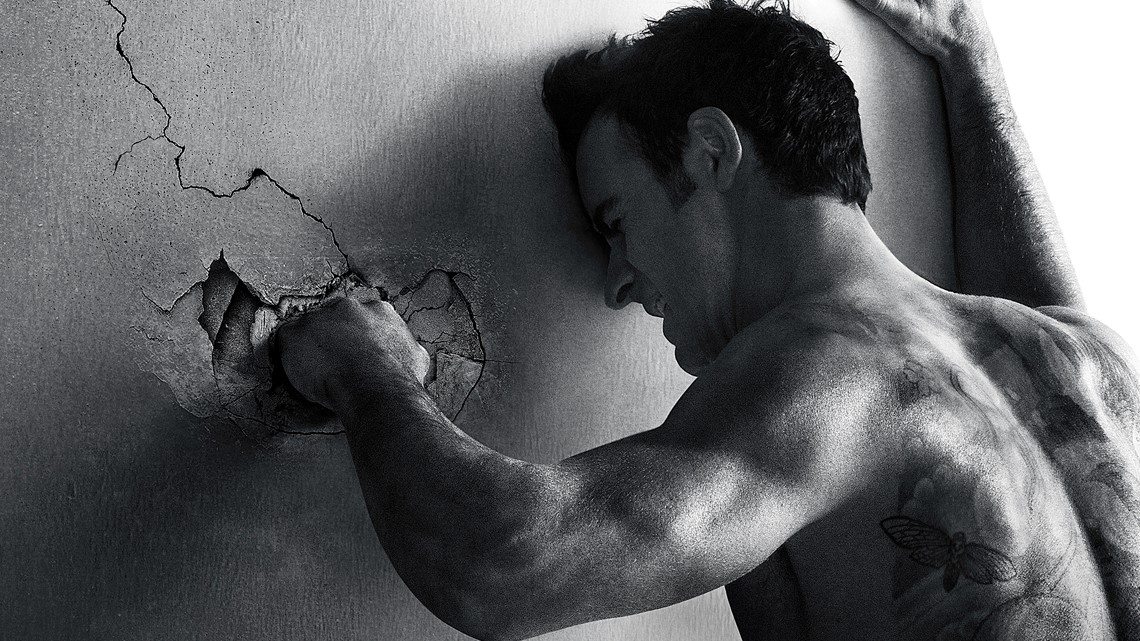The Leftovers Series blog: Episode 5
The Leftovers stalls a little this week, victim to the dreaded mid-season stagnancy that afflicts so many otherwise great shows. Marking the halfway point on its initial run, ‘Gladys’ finally sheds some light on the Guilty Remnant – albeit, only enough to tantalise us into returning for future installments. Lindelof and Perrota’s first shared writing credit since the pilot, it’s also the weakest episode yet, more interested in moving pieces and escalating conflicts than telling its own self-contained story.
The episode opens with a truly harrowing depiction of violence as a member of the Guilty Remnant is murdered in a brutal hate crime. Silence makes it all the more disturbing; the twilight reverie of the scene only broken by the audible, rhythmic impact of the missiles as the woman is stoned to death. Despite having little bearing on the narrative, the woman remains one of the more prominent members of the cult, cleverly seeded by the show as a visible presence in several episodes. As such, when Gladys finally cries out and breaks her vow of silence, it feels like nothing less than a punch to the gut. If you still didn’t know what sort of show this was, you certainly do now. Uncompromising in its rendering of humanity, the scene reads like a mission statement for The Leftovers going forward, seeking to shake away any residual complacency left in its already beaten and battered audience.
Sadly, this opening scene establishes a dramatic peak from which the rest of the episode simply peters out. Gladys splits this time between the estranged Laurie and Kevin Garvey, with the latter’s story coming out on top as the slightly more engrossing of the two. Laurie suffers a panic attack in the wake of her fellow cult member’s death, and more importantly, a growing sense of doubt prompted in part by her brief encounter with Jill in last week’s episode. Picking up on this, Guilty Remnant leader and all-around enigma Patti takes Laurie on a daylong retreat away from the cult, with even the white uniforms and vows of silence put aside.
It’s an intriguing idea that Lindelof and Perotta unfortunately fail to capitalise on. The scenes with Laurie have a slower, contemplative mood, but her continued silence hinders the narrative rather than helps it. The silence isn’t an obstruction in of itself, and in the right hands could have allowed a more economic form of storytelling to take place. Until her backstory is further fleshed out, Laurie’s character development remains one of increasingly diminishing returns.
The only saving grace here is in Ann Dowd’s portrayal of Patti as leader of the Guilty Remnant. She’s done well with the little she’s had so far, cutting quite a frightening figure as the stern matriarch, making it all the more delightful when she explodes with sudden energy here. She fluctuates between dryly humorous and emphatically emotional in a matter of seconds, laughing as if to keep the crying at bay. Nonetheless, whilst it might be delivered with conviction, her fiery monologue to Laurie on the importance of their cause falls largely flat because the Guilty Remnant’s aims remain shrouded in mystery. Their seemingly empty lives find some explanation in the unintentionally funny anti-motivational posters that hang in the cult’s various homes – ‘Not Long Now’ says one, reassuring people already dead that their limbo is only a temporary one.
The scenes with Laurie have a slower, contemplative mood, but her continued silence hinders the narrative rather than helps it
Chief Garvey’s is a slightly lighter tale, playing out for the most part as a comedy of errors. Dealing with the consequences of Gladys’ murder, the chief repeatedly runs up against the walls of bureaucratic opposition in both his personal and professional life. Whether it’s getting back some white shirts from a dry cleaners or passing the vote on a curfew for the town, Garvey increasingly finds himself embroiled in red tape and inertia. It’s a stalling tactic of sorts, but there is an insidious escalation behind it as events constantly threaten to spill over into violence.
The same sense of escalation is applied to the wider narrative as larger forces begin to make themselves known. The Washington task force that takes over the handling of Gladys’ body – ATFEC – connects us back to the assault on Holy Wayne’s compound in an earlier episode, with their representative, Agent Kalleny, offering to ‘eliminate’ the Guilty Remnant for Kevin if he so desires. Theirs is a bureaucracy at state level, chilling in both its easy affability and hidden coldness, in a manner that makes Kevin’s own agency as an individual look small and unimportant by comparison.
It’s an exciting expansion of the show’s scope that subsequently overshadows the majority of the episode’s smaller progressions, with almost all of the character development for the Garvey family playing out in the episode’s dying minutes. The reconciliation between Kevin and Jill in particular comes across as a well-earned moment of emotional catharsis, and bodes well for Margaret Qualley’s character as the season progresses. All the same, it constitutes little more than a consolation prize of sorts in an otherwise underwhelming episode of The Leftovers.

Comments